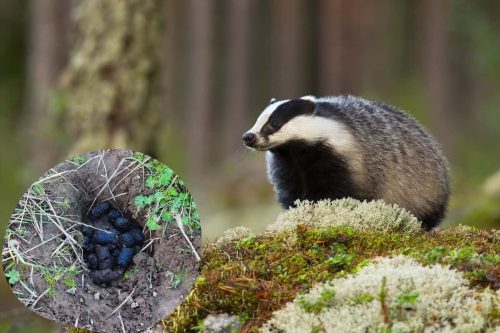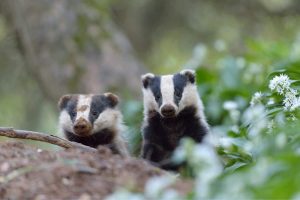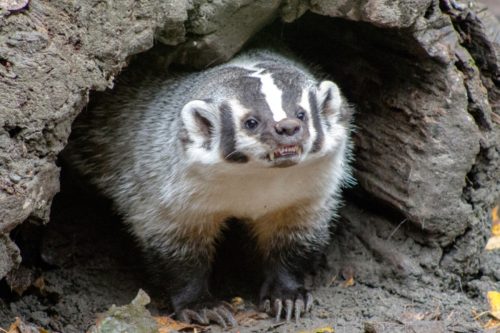Badger Dens – Exploring The Underground Badger Setts
Badgers like to live in underground interconnected tunnel systems which are called setts or dens. These dens are specially designed for protection against hazards as well as predators. They also use them for giving birth, storing food, and for sleeping purposes. There are many tunnels and entrances inside the badger dens which are good for badger’s hidden movement.
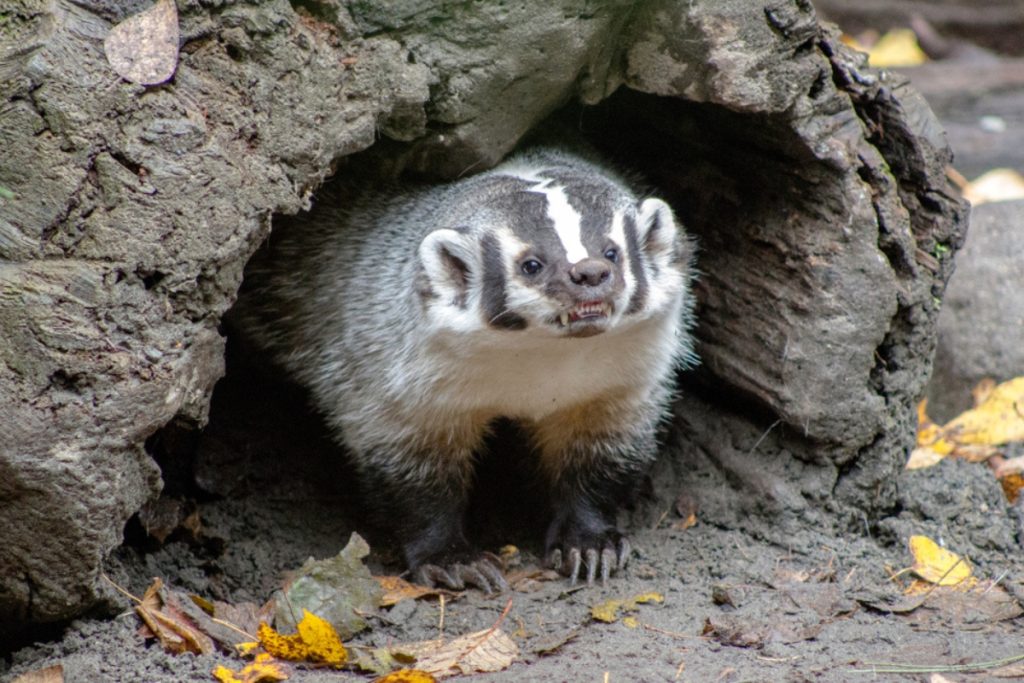
Contents
- What is a badger’s den called?
- Why do badgers make deep dens?
- Badger den size
- How to identify a badger den?
- Badger Setts / Dens Types
- Do all badgers dig sett?
- Do all the setts exist in a single territory?
- Do other animals also live in badger’s sett?
- What kind of soil is favorite for badger’s digging?
- Where do badgers dig sett or Den?
- What are the main components of a badger’s den?
- Frequently asked questions
- Final Takeaways
What is a badger’s den called?
There are also many other names for badger dens like badger sett or badger burrows. They are actually located near the woodlands or corpses. In some areas, some very well-established sett are excavated which transfer from one generation to another. The size of the den depends upon the type of soil on which they are building the den.
Why do badgers make deep dens?
Badgers have very strong and muscular legs and long sharp front-end claws. These things make them eligible for digging several deep dens. Sometimes they have to face very hard and compact soil due to high levels of gypsum but they are also able to make dig them easily due to their stout body parts and natural capabilities. They mainly dig in search of prey but if they dig deep then it is for the sake of burrows or dens to protect themselves from predators and other tasks.
Badger den size
Badgers like to make a lot of dens wherever they find it suitable to live. The size of the den actually depends on the size of the tunnels inside the den. An average size den has 10 feet deep and 30 feet long tunnel. While making dens, badgers carefully consider the impact of flooding on the den. That’s why they also make nesting chambers inside the den slightly higher than the normal height of the den. It keeps them safe from a higher level of water inside the tunnels.
How to identify a badger den?
Badgers mark their territories with special dung and they also keep this dung inside their den. These things make it quite easy to identify the badger den. The shape of the entrance is also a good way to identify the badger den. Badger’s den entrance has some unique markings like claw marks and the large size of the hole.
There are some indicators that we can analyze. Let’s have a look at them.
Badger Setts / Dens Types
There are types of sett given as:
- Main setts.
- Annex setts.
- Subsidiary setts.
- Outlying setts.
There are also chances of converting non-main setts to main setts. Let’s have a look at these sets one by one.
Main setts
These sets consist of a large number of holes having a heap of soil. They make a very compact path for the movement but they could smoothly move as they can adjust their body accordingly. The main sett is not abandoned normally, it remains continually in use. It might be disused when they do excessive digging. A large sett may also contain a small amount of dung in the corners of the setts.
Main setts have few holes if there are very few badgers living inside them.
Annex setts
They are found very close to the main sett or almost 150m away. These are also connected to the main setts in one way or another. It has several holes but is not necessarily used all the time.
Subsidiary setts
These setts have very few holes and are at least 50 m away from the main setts. These setts are not inter-connected and are not continual in use.
Outlying setts
These setts have very few holes and have almost no spoil. These are not inter-connected and are not continuously used. When they are abandoned by badgers, then these setts are taken over by rabbits, foxes, etc. They are 250 to 300 mm wide from the base and have rounded roofs.
Do all badgers dig sett?
No, it is not equally done by all the badgers. According to oxford university research, only 20% of members of the badger clan having higher social status do 60 to 90 % of digging and bedding material. Males normally do more digging as compared to female badgers. They increase the number of nesting chambers for the sake of breeding female badgers. Sometimes female badgers also take part in collecting bedding material.
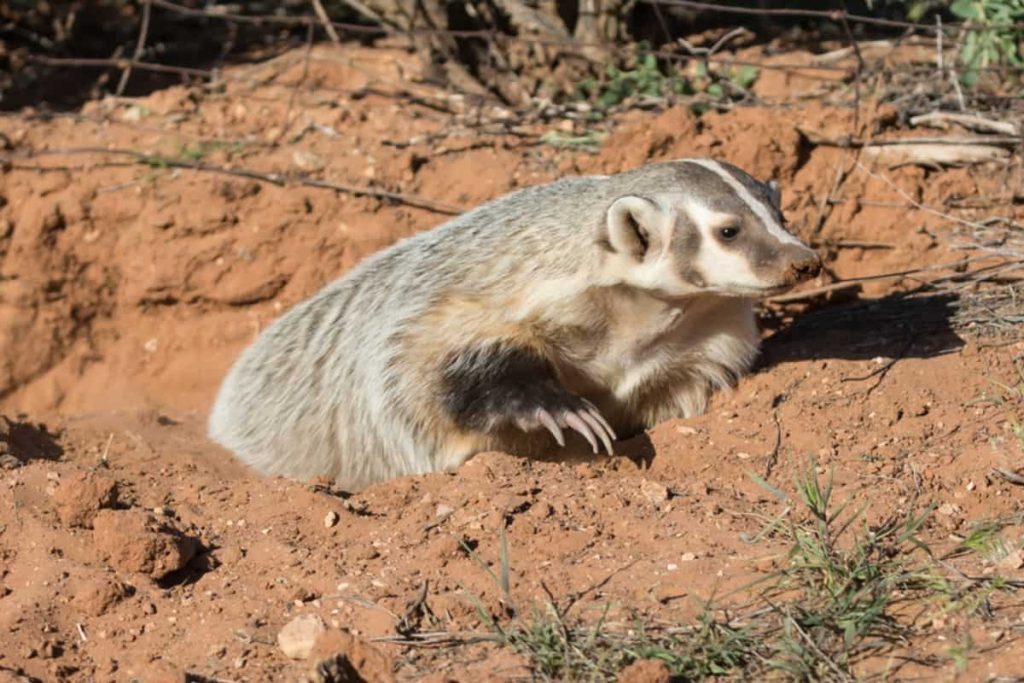
Do all the setts exist in a single territory?
It mainly depends upon the size of the clan, territory, and the availability of food in a particular territory. A very large territory having poor food supply usually has more outlying setts. It happens because in these kinds of territories badgers have to go far away in search of food and they could not come back every time to the main sett.
Do other animals also live in badger’s sett?
Yes, many other animals like foxes, wood mice, voles, rabbits, and weasels also use the badger’s sett. Foxes normally give birth to their young cubs in these dens. But these animals don’t live alongside badgers. Badgers hate foxes to occupy their place, as foxes’ remnants, and urine has a very stinky smell. That’s why badgers force the foxes to vacate their premises as soon as possible.
What kind of soil is favorite for badger’s digging?
They like to do digging in the soil where it is quite easy to dig. Sandy soil, chalk, and broken limestone are drier and soft which are quite easier to dig. Badgers don’t like to dig in wet and sticky soil like clay. But if there is no other opportunity, then they could also dig in clay.
Badgers also like to dig in sloppy grounds at the sides of hills. Water doesn’t stay in this kind of soil and it stays dry. 90 % of sett are found in dry areas. Sloppy areas are also beneficial because in these areas there is no risk of rising water levels which could put the tunnels in danger.
Where do badgers dig sett or Den?
Badges can dig dens in any kind of habitat. In this regard, the favorite place of the badgers is to dig in hedgerows and woodlands. They also like to dig in areas like moorland, old quarries, sand dunes, seal cliffs, and abandoned mines. Other than this, they could also utilize places like mines, old caves, and quarries if they want a more secure place for their clan. They also do their best for the safety of their dens because they do a lot of effort into making and expanding them.
What are the main components of a badger’s den?
Let’s have a look at the main components of the badger’s den.
Entrance holes
A well-established sett has many entrance holes which are usually larger than the size of a rabbit. You can also find 50-100 entrances in a very large sett. These big setts are dug by many badgers and take many years to build these kinds of dens.
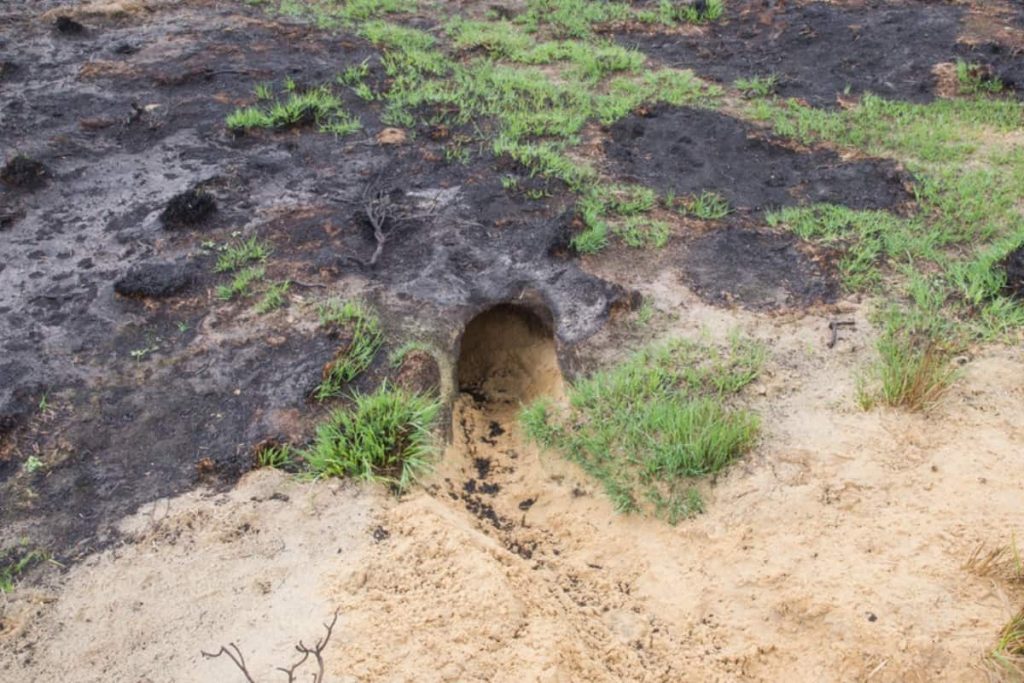
Tunnel
A den has many or at least a single tunnel. A simple sett has a single tunnel and a sleeping chamber. Mostly, the sett has many interconnected tunnels with many entrance holes. These tunnels are also interconnected with nurseries and sleeping chambers. These tunnels are designed in such a way that they could easily supply fresh air in all kinds of weather.
Some tunnels are excavated at deeper depths under the surface where there could be a problem in the natural flow of air. In this case, badgers rushing through these tunnels make the way clear for the flow of fresh air.
Nesting chambers
The nesting chamber is the place where the badgers sleep and become comfortable after doing a lot of labor. These chambers are good for both the summer and winter seasons. They also keep the badgers insulated from both extreme wetting and drying. These chambers are ideal for small cubs as they could enjoy a very pleasant atmosphere in the nesting chambers.
It is usually thought that nesting chambers exist at the end of the tunnel. They might be away from entrances but they are not normally found at the end of the tunnel. These chambers create blockage for airflow at the end of the tunnel. That’s why these chambers are made in the mid of the tunnel for a good flow of air.
There is not one fixed shape for any nesting chamber. It also depends upon the season as well as the size of the badger. Badgers also keep these chambers intentionally small and compact because in this way they remain warm in the winter. It is greatly helpful for maintaining their body temperature in the winter. Badgers can retain more heat while sharing the chamber with female badgers.
Badgers also don’t use these chambers continuously. They can use one chamber for consecutive 3 days only. In this way, each chamber will remain fresh and clean. Bedding material of the chamber is also occasionally brought outside for drying and freshening in the daylight. These materials are re-useable for at least a whole year.
Inside the den, temperatures remain within the range of 6 to 19 degrees in all seasons. It is not impacted by the outside weather or temperature. It is mainly maintained with the help of vegetation cover at the entrance. However, the den remains highly humid throughout the whole year. That’s why they brought it out for drying.
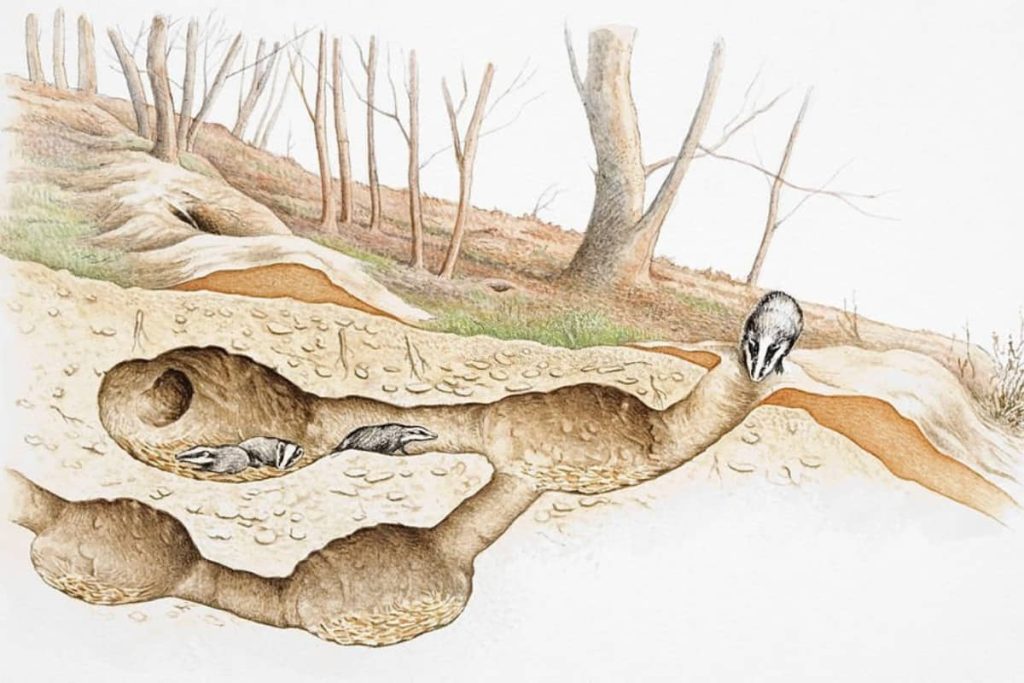
Frequently asked questions
Final Takeaways
Badger dens are a very important part of their lifestyle. They spend a portion of their life while making these dens. These dens also depict the lifestyle they adopt. These dens are used for multiple purposes like storing food, sleeping and hiding inside from harsh weather and predators. In this way, these dens play a great role in elongating the lifestyle of the badgers.

Izzy is an experienced ranch worker who has a passion for exploring nature and getting up close to wildlife. With her connections to various animal organizations, Izzy is well-versed in animal care and rehabilitation.






